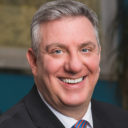Every foundation has two things in common: big dreams and money. But money alone isn’t enough to make those dreams come true. To achieve the desired impact, foundations can consider themselves ‘changemakers’ more than ‘grantmakers.’ Increasingly, foundations are going beyond writing checks as they flex their activist muscles to halt climate change, prevent gun violence, bolster education, advance LGBTQ rights, safeguard democracy, and improve health care.
The changemaker model is one we have embraced at the New York State Health Foundation. It’s a pervasive mentality that is woven into everything we do. We are a private, midsized foundation with an endowment close to $300 million to support our mission to improve the health of New York State residents. But our total assets are less than one-half of one percent of New York’s annual Medicaid budget. Our financial resources alone aren’t sufficient to make a big difference in a state as large and diverse as New York.
To make change, we deploy each type of capital we have: financial, human, and reputational. The money draws people in, but we have also invested in a highly professionalized staff. And all of that feeds our reputation, which is perhaps our most important asset. We have no financial self-interest; our only interest is the public interest. That position enables us to bring together diverse stakeholders and forge common ground among those who don’t always agree—a role that many foundations are well-suited to play.
Being a changemaker means taking a comprehensive approach, including:
Robust communications: We use a comprehensive communications strategy built on the pillars of traditional media, social media, publishing, email, and our website. Foundations can be a source that the media, policymakers, and others ask to explain and comment on issues from an informed and nonpartisan platform. Being nonpartisan doesn’t have to mean being silent. Having a point of view, and effectively communicating it, advances an agenda and greatly enhances the impact of grantmaking.
Convening: We move the needle on our issues through a busy schedule of convenings. Invitation-only working meetings bring together groups who often disagree and give them a place to argue about thorny issues and then reach consensus. We organize public conversations on key health issues. Annual conferences for hundreds of attendees highlight our strategic priorities. These events allow for the free exchange of ideas, learning, and relationship-building.
Public Comments: Foundations do have a voice, and we use ours carefully and strategically, through letters to the editor, op-eds, journal articles, blogs, and presentations. We also respond to public comment periods offered by federal and state government. Although private U.S. foundations are prohibited from lobbying, they are free to take positions on regulatory actions.
Issue Campaigns: Our first full-fledged issue campaign centered on creating universal free school lunch for all 1.1 million school children in New York City. We started by making a grant, but it would take much more than the grant to make it over the finish line. The issue wasn’t a high priority for the City’s decision-makers, so we did everything we could to call attention to it: public events, blog posts, speeches, meetings with City officials, opinion polling of voters, direct mail, and television and digital ads. It all worked: in 2017, New York City’s budget included funding for universal free school lunch and it has been implemented in every public school.
Of course, this approach has to be taken with care and common sense. We tackle the issues that we care about most deeply, and where we are well-positioned to have a unique impact. Sometimes the strategic choice is to be neutral. For example, we supported a rigorous, independent, and nonpartisan analysis of New York State’s proposed single-payer health care plan. On this particular issue, our role wasn’t to support or oppose the plan, but to ensure that policymakers and the public can make decisions based on facts rather than rhetoric.
Being an activist philanthropy is about taking informed risks. More than in any other sector, we have the freedom to fail. We’re not accountable to shareholders, or to voters. So why are we as a field so skittish about high-risk but potentially high-reward opportunities? Strategic philanthropy is about more than writing checks. Behaving as activists with more than money, we can make a big difference.
David Sandman is President and CEO of the New York State Health Foundation.



Comments (0)